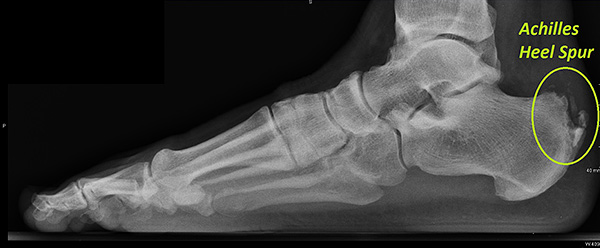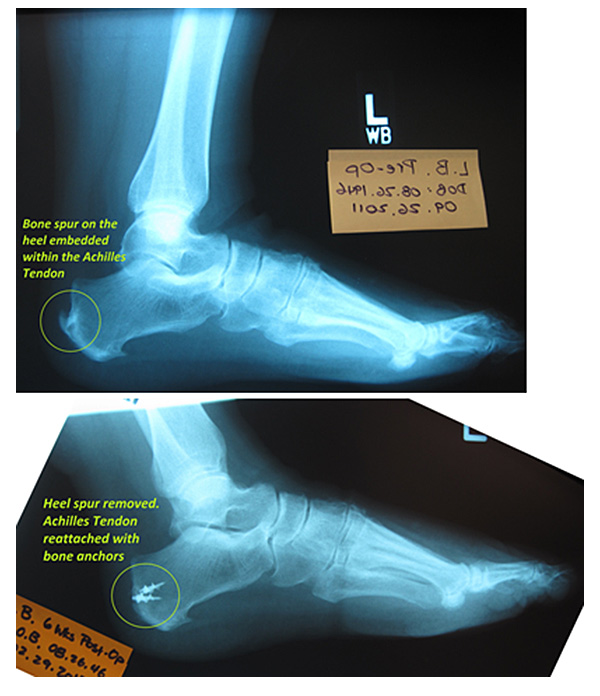Pain or swelling in the back of the foot or just above the heel bone may indicate signs of Achilles Tendonitis. The Achilles tendon connects the leg to the foot as it stretches from the lower leg to the heel bone, is the largest and strongest tendon in the body. This tendon is crucial to normal walking pattern as it allows the foot to rise up on the toes.
Achilles Tendonitis typically develops over a period of time as the tendon becomes more and more inflamed. With chronic degeneration of the tendon, calcification or bone spurs may develop over a period of time. Small boney ossicles can be found embedded within the diseased tendon as well as spurring over the back of the heel bone where the Achilles tendon attaches. This area is often very painful with palpation. Please visit the Achilles Tendonitis page on Achilles Tendonitis for more information regarding conservative treatment for this problem.
Unfortunately despite conservative treatment, Achilles tendon surgery in some cases may be necessary to remove spurring and clean out the diseased portion of the Achilles tendon. During your consultation, our foot and ankle surgeon will perform a thorough physical exam, evaluating your heel and integrity of the Achilles Tendon. X-rays and/or additional imaging such as ultrasound and MRI will be ordered by the doctor to further evaluate your condition.

In chronic Achilles problem, calcium deposits can be found within the Achilles tendon where it attaches to the heel bone.
Based on these findings, Dr. Wang will determine the type of surgery that is needed for this problem. It can entail a procedure to “clean out” the diseased portion of the Achilles Tendon or the Achilles Tendon may be temporarily detached in order to remove the heel spurs. In the latter case, bone anchors may be required in order to reattach the Achilles Tendon back onto the heel bone.

Surgery to remove bone spur and diseased portion of the Achilles Tendon.
After the surgery, a cast will be applied to protect the surgical area for a few weeks. In most cases, patient will transition into a fracture boot. Physiotherapy and rehabilitation will be initiated between 4 to 6 weeks after surgery.
If you are experiencing pain and/or swelling in this region, a consultation with our knowledgeable foot and ankle specialist will help you determine what the best course of treatment is. Contact us to book your consultation today.

